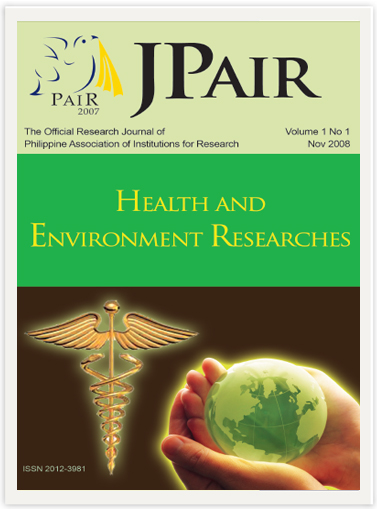Posture Assessment and Ergonomic Analysis of Pot Makers
DOI:
https://doi.org/10.7719/jpair.v1i1.34Keywords:
ergonomics, posture assessment, pot maker, work-related musculoskeletal disorderAbstract
This study applied ergonomics principles to improve the work environment of pot makers in Barangay Nagrebcan, San Nicolas, Ilocos Norte. The objectives included assessing the posture of pot makers, conducting a task analysis of pot making, analyzing workstations, identifying workplace hazards, determining common work-related musculoskeletal disorders (WMSDs), and examining the relationship between demographic factors and WMSDs. A descriptive-correlation design was used, focusing on the value of ergonomics in this context. The study divided task analysis into three phases: mixing, kneading, and molding. It employed tools like the Rapid Entire Body Assessment (REBA), Ovako Working Posture Analysis System (OWAS), Workplace Hazard Assessment, and Discomfort Survey questionnaires. Findings revealed that pot makers often adopted awkward postures, such as deep squatting and trunk bending, which posed high risks of injury according to REBA and required corrective measures as indicated by OWAS. Workplace hazards included impact, dust, penetration, thermal, and rain exposure. Discomfort was commonly reported in the low back and wrist/hands. The study highlighted the need for ergonomic improvements to enhance productivity and employee welfare in the pottery industry of the Ilocos Region.
Downloads
References
Adams, C. (2008). Ergonomic principles: Task analysis. The New York Times Company. Retrieved from https://web.archive.org/web/20081206114140/http://ergonomics.about.com/od/ergonomicbasics/qt/ep_1st_fit.htm (Originally accessed January 7, 2008)
Downloads
Published
Issue
Section
License
Copyright (c) 2008 Baldhomero L. Ranjo II, Richard V. Madariaga

This work is licensed under a Creative Commons Attribution-NonCommercial 4.0 International License.
Open Access. This article published by JPAIR Multidisciplinary Research is licensed under a Creative Commons Attribution-Noncommercial 4.0 International (CC BY-NC 4.0). You are free to share (copy and redistribute the material in any medium or format) and adapt (remix, transform, and build upon the material). Under the following terms, you must give appropriate credit, provide a link to the license, and indicate if changes were made. You may do so in any reasonable manner, but not in any way that suggests the licensor endorses you or your use. You may not use the material for commercial purposes.




















